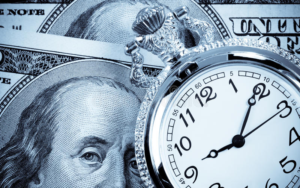
In recent years, behavioral economics has emerged as a powerful tool for understanding and influencing human behavior. This interdisciplinary field combines insights from psychology, economics, and neuroscience to examine the biases and heuristics that drive decision-making. While traditional economic models assume that individuals are rational, behavioral economics acknowledges that people often make decisions based on emotions, cognitive shortcuts, and social influences. As a result, public policy can greatly benefit from incorporating behavioral insights to better address societal challenges and enhance policy effectiveness.
Understanding Behavioral Economics
Behavioral economics is an interdisciplinary field that integrates insights from psychology, economics, and neuroscience to study human decision-making. It challenges the traditional economic assumption of humans as rational agents who always make optimal choices in their best interest. Instead, behavioral economics recognizes that people often make decisions based on emotions, cognitive shortcuts, and social influences. It focuses on understanding the factors that lead to these deviations from rationality and explores ways to improve decision-making.
Differences between Traditional and Behavioral Economics
Traditional economics relies on the assumption that individuals are rational actors who consistently make choices that maximize their utility. This assumption forms the basis of standard economic models and policy recommendations. However, behavioral economics exposes the flaws in this assumption by demonstrating that people often exhibit systematic biases and irrationalities in their decision-making.
In contrast, behavioral economics acknowledges the complexities of human behavior and the role of cognitive biases, emotions, and social factors in shaping decisions. By incorporating these factors, behavioral economics offers a more accurate depiction of how people make choices and allows for the development of more effective policies.
Examples of Cognitive Biases and Heuristics in Decision-making
Behavioral economics has identified numerous cognitive biases and heuristics that influence decision-making. Some key examples include:
- Anchoring: People tend to rely heavily on the first piece of information they receive (the “anchor”) when making decisions, even if it is irrelevant or misleading.
- Confirmation bias: Individuals have a tendency to favor information that confirms their pre-existing beliefs while ignoring or dismissing conflicting evidence.
- Loss aversion: People often exhibit a stronger preference for avoiding losses than for acquiring gains of equal magnitude, which can lead to suboptimal decisions.
- Present bias: Individuals tend to prioritize immediate rewards and gratification over long-term benefits, causing them to make choices that might not be in their best interest in the long run.
- Status quo bias: People have a natural inclination to maintain the current state of affairs, even when making a change might lead to better outcomes.
- Social proof: Individuals often look to the behavior of others to determine how they should act in a given situation, which can result in the spread of suboptimal choices or behaviors.
- Availability heuristic: People tend to overestimate the likelihood of events based on how easily they can recall similar instances, which can lead to biased judgments.

Policy Areas where Behavioral Economics Can Be Applied
Behavioral economics has the potential to revolutionize public policy by offering insights into how people make decisions and respond to incentives. By understanding the underlying biases and heuristics that drive human behavior, policymakers can design interventions that nudge individuals toward better choices.
Health Policy
Behavioral economics can be used to encourage healthy behaviors, improve adherence to medical treatments, and promote preventive care. By leveraging insights into loss aversion, present bias, and social proof, policymakers can design interventions that:
- Encourage healthier lifestyles, such as promoting exercise, healthy eating, and smoking cessation, by using incentives and social norms.
- Improve medication adherence through reminders, simplifying dosing schedules, and using commitment devices.
Increase vaccination rates by leveraging social norms, reducing access barriers, and employing default options.
Environmental Policy
Addressing environmental challenges requires shifting individual and collective behaviors towards more sustainable practices. Behavioral economics can help policymakers design strategies that promote resource conservation, waste reduction, and adoption of clean technologies:
- Encourage energy conservation by providing real-time feedback, social comparisons, and framing energy use in terms of potential losses.
- Promote recycling and waste reduction through nudges, convenience, and social norms.
- Foster adoption of renewable energy and energy-efficient technologies by leveraging loss aversion, default options, and targeted incentives.
Education Policy
Educational outcomes can be significantly impacted by the cognitive biases and decision-making processes of students, parents, and educators. Behavioral economics can provide valuable insights for developing policies that:
- Enhance student motivation and engagement through goal-setting, timely feedback, and the use of gamification techniques.
- Improve educational choices by simplifying complex information, reframing options, and leveraging social comparisons.
- Support parent involvement and communication with schools by reducing barriers, offering user-friendly platforms, and utilizing behavioral nudges.
Financial Policy
Financial decision-making can be particularly susceptible to cognitive biases and emotional influences. By applying behavioral economics principles, policymakers can help citizens make better financial choices and create a more resilient economy:
- Encourage saving and retirement planning through automatic enrollment, default contribution rates, and commitment devices.
- Promote financial literacy and informed decision-making by simplifying financial products, providing clear and relevant information, and leveraging framing effects.
- Support responsible borrowing and debt management by enhancing transparency, providing timely interventions, and designing repayment plans that consider cognitive biases.
Social Welfare Policy
Behavioral economics can inform the design and delivery of social welfare programs to better support those in need and maximize policy impact:
- Simplify application processes and reduce administrative barriers to increase access to benefits and services.
- Utilize timely reminders, default options, and commitment devices to improve program engagement and compliance.
- Design interventions that account for the psychological and emotional challenges faced by individuals in need, such as scarcity mindset and decision fatigue.
- By integrating behavioral economics insights into these policy areas, governments can create more effective and targeted interventions that lead to improved societal outcomes and enhanced well-being for all citizens.

Strategies for Incorporating Behavioral Economics in Public Policy
To effectively leverage behavioral economics in public policy, policymakers must understand the various strategies and tools available for incorporating behavioral insights into policy design and implementation. In this section, we will discuss three key strategies for incorporating behavioral economics into public policy: nudge theory, choice architecture, and framing effects.
Nudge Theory
Nudge theory, developed by Richard Thaler and Cass Sunstein, posits that subtle changes in the way choices are presented can significantly influence people’s behavior without restricting their freedom of choice. Nudges can take various forms, such as changing default options, providing timely reminders, or leveraging social norms.
For example, automatically enrolling employees in retirement savings plans with an opt-out option (rather than requiring them to opt-in) has been shown to significantly increase participation rates.
While nudges can be an effective tool for influencing behavior, they also raise ethical concerns regarding paternalism and manipulation. Policymakers must carefully consider the balance between promoting societal welfare and respecting individual autonomy when designing and implementing nudges.

Choice Architecture
Choice architecture refers to the way choices are organized and presented, which can have a significant impact on decision-making. By designing choice environments that take into account cognitive biases and heuristics, policymakers can help individuals make better decisions.
Examples of choice architecture include simplifying complex information, reducing the number of choices presented, and strategically ordering options. For instance, organizing food choices in a school cafeteria to make healthier options more prominent and accessible can encourage students to make healthier food selections.
To design effective choice architectures, policymakers should consider the following principles:
- Understand the target audience: Identify the specific cognitive biases and heuristics that are most relevant to the population being served and tailor the choice architecture accordingly.
- Make the desired choice the path of least resistance: Simplify decision-making processes and remove barriers that may impede individuals from making optimal choices.
- Test and iterate: Continuously evaluate the effectiveness of choice architectures through pilot programs, randomized controlled trials, and other evaluation methods. Use the insights gained to refine and improve the choice environment.
Framing Effects
Framing effects occur when the presentation or context of information influences people’s perceptions and decisions. By understanding framing effects, policymakers can craft messages and present information in a way that promotes better decision-making.
For example, emphasizing the potential losses associated with not getting vaccinated (e.g., illness, missed work, medical costs) rather than the benefits of vaccination (e.g., immunity, peace of mind) may be more effective in motivating individuals to get vaccinated, as people tend to be more sensitive to losses than gains.
To harness the power of framing effects, policymakers should:
- Identify the most effective frame: Determine which framing approach is most likely to resonate with the target audience and encourage the desired behavior.
- Be consistent: Ensure that all communications related to a policy or intervention consistently use the chosen frame to maximize its impact.
- Use framing judiciously: While framing can be a powerful tool for influencing behavior, it is essential to use it ethically and transparently. Policymakers should avoid using manipulative or misleading frames that could undermine trust and credibility.
By incorporating these strategies—nudge theory, choice architecture, and framing effects—into public policy, governments can design more effective and targeted interventions that account for the complexities of human decision-making. This, in turn, will help promote better outcomes for citizens and create a more efficient, equitable, and sustainable society.







